On the day following our bike ride on the Greenbrier River Trail in West Virginia, Daniel and I took an indirect route back to Charlottesville, picking up a few geocaches along the way.
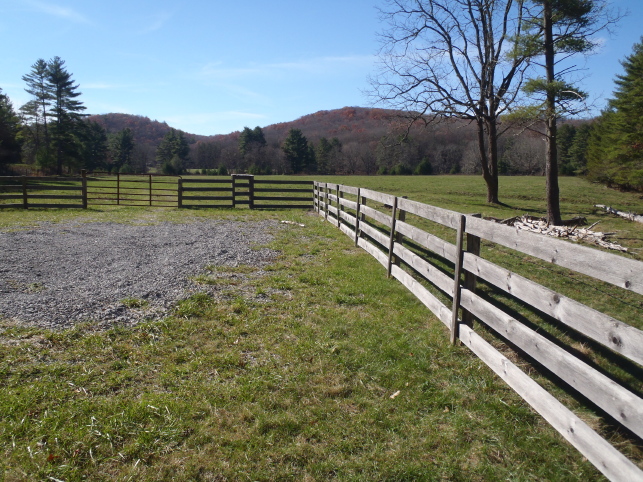
Our first stop was this pretty grazing area nestled between the mountains in Pocahontas County, WV. We had passed it the day before on our shuttle ride from Lewisburg up to Marlinton.
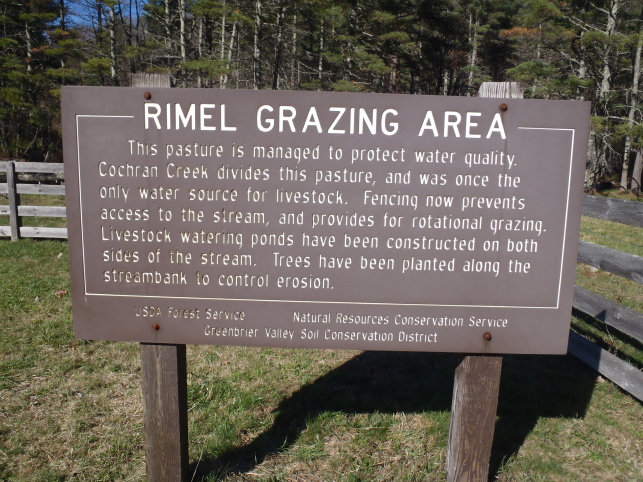
This was the first I ever heard of the Forest Service managing grazing lands.
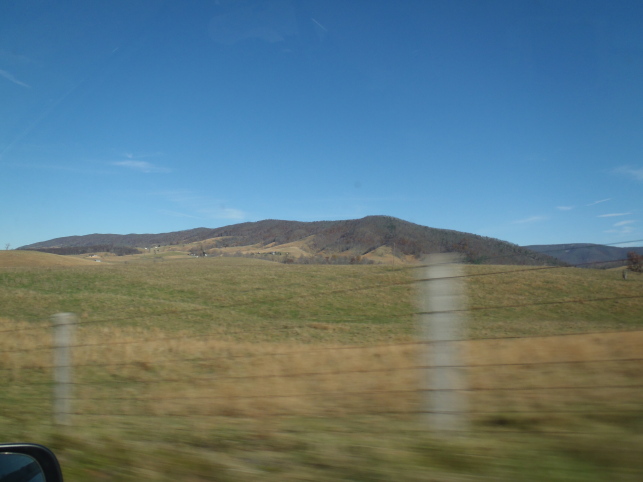
Our route took us into Highland County in western Virginia, an area where rolling meadows lie between long mountain ridges.

A “virtual” geocache (coordinates only; no container to find) brought us to this overlook, where Route 250 climbs up Lantz Mountain and you can look back across the valley to Monterey Mountain.
Our main goal was to find a geocache in a location that would fall within the borders of Virginia on map 64 of the Virginia Delorme Atlas & Gazetteer. (We’re gradually working on a “Delorme challenge” for the state of Virginia; the idea is to find at least one geocache on each page of the atlas. Gimmicky, but it has inspired us to explore and appreciate parts of the state that we would otherwise never pay any attention to. Map 64 encompasses the northern corner of Highland County, one of the sharp jags that you see on the western edge of a map of Virginia.) There are only three active geocaches in that area. We initially picked one that was described as being a short walk along a trail from a campground, but due to a navigational error on my part, we ended up pursuing a more remote cache—and I’m glad we did. It turned out to be one of my favorite geocaching experiences ever.
The cache description promised, “The hike to this cache will take you through a number of different eco-zones, from deciduous forest to upland ‘bog-like’ vegetation to wetlands grass.” We found this to be true: we hiked less than half a mile from a forest road, but passed through several small pockets of different vegetation: deciduous forest, evergreen forest, patches of moss and lichen, tiny bog-like areas, and finally the meadow where the cache was stashed.
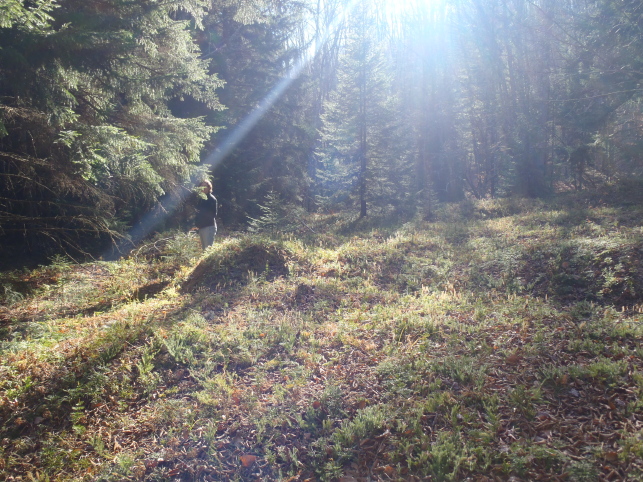
The forest looked enchanted. It was very quiet among the firs, and there were several of these little clear pockets.
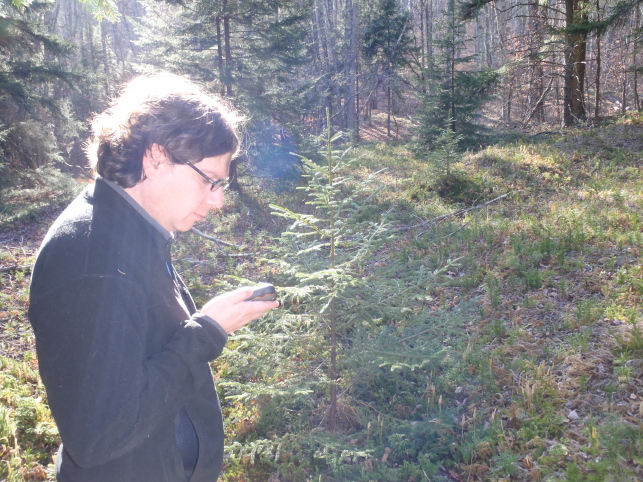
There was no path, so we had to consult our GPS topo maps, look at the ground ahead of us, and try to find a good route.
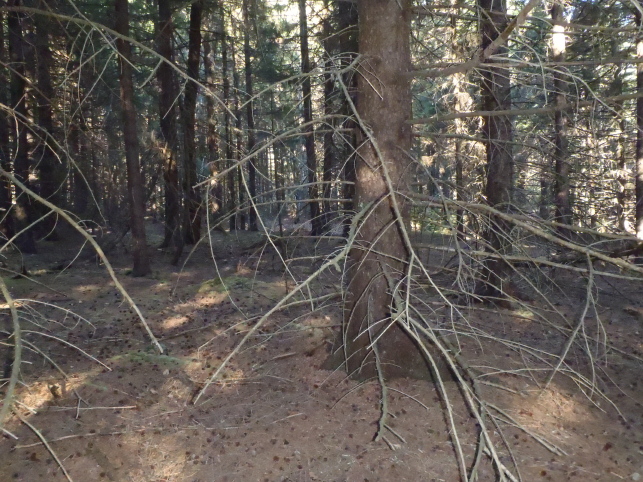
We came into a patch of bigger evergreens.
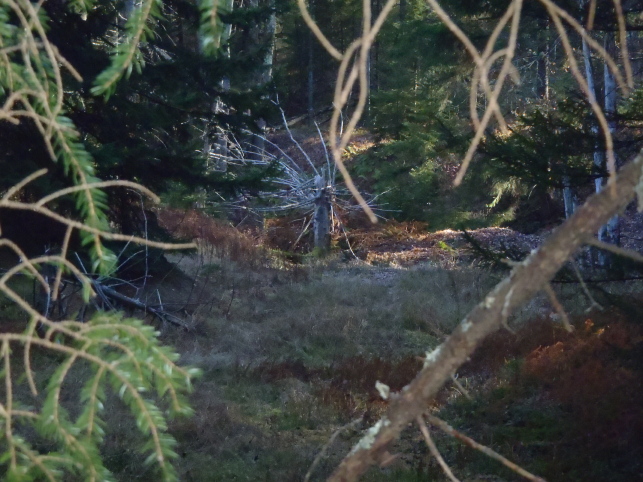
This is not a very good picture with the branches crowding in around me and getting caught in the flash, but the dead evergreen stump standing alone in the middle of a low, damp spot was very striking when I saw it in person.
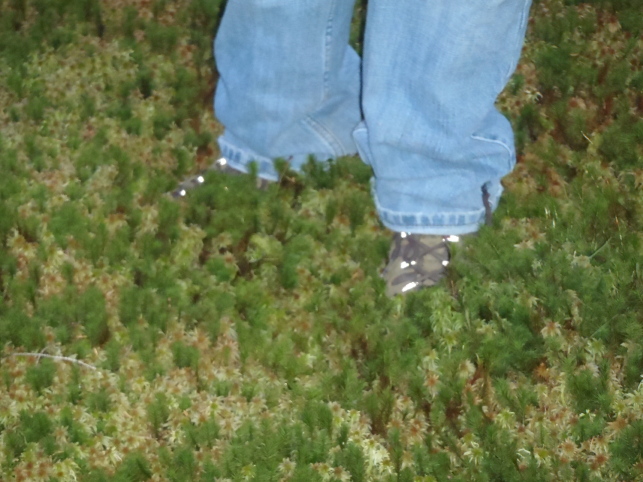
We found a large bed of deep moss that reminded me of the moss bed near the brook at Panther Pond.
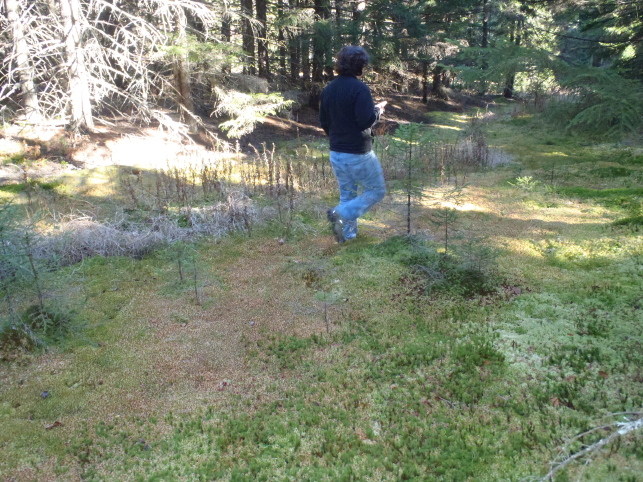
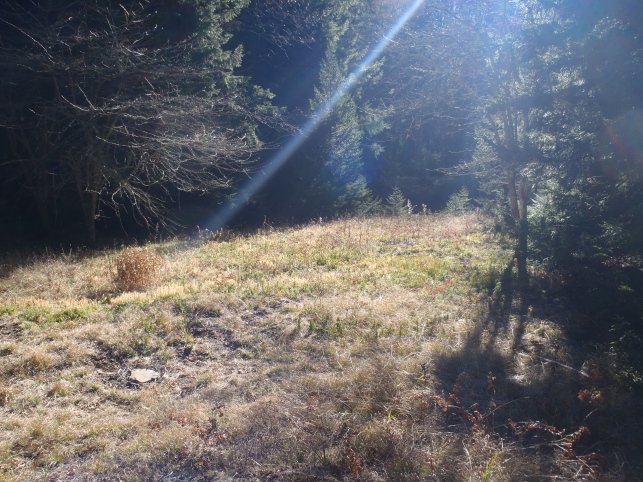
Another odd little clear spot in the forest. We knew we were looking for an “upland meadow”; this wasn’t big enough to qualify as a meadow, but it hinted that we were getting close.
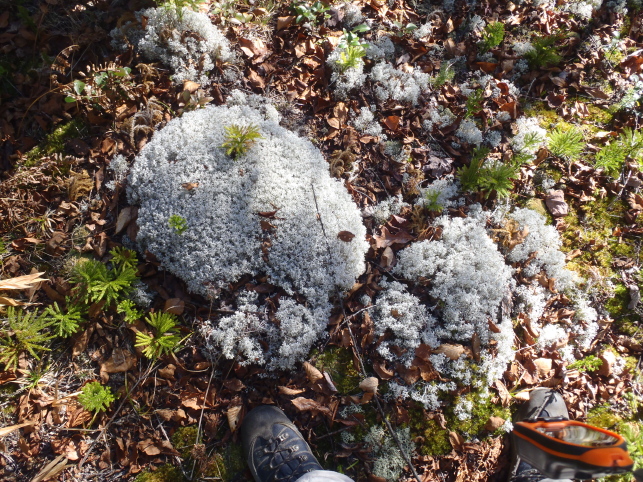
Up a hill from the moss beds we found this clump of lichen. It looks puffy and pillowy but it was rigid and spiky to the touch.
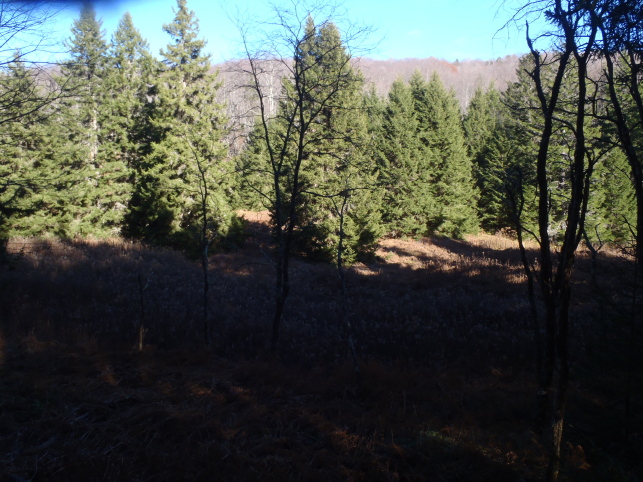
We finally found the meadow. I wasn’t able to get a good picture of it, due to the extreme contrast between deep shade and bright sun. I could underexpose the shadows . . .
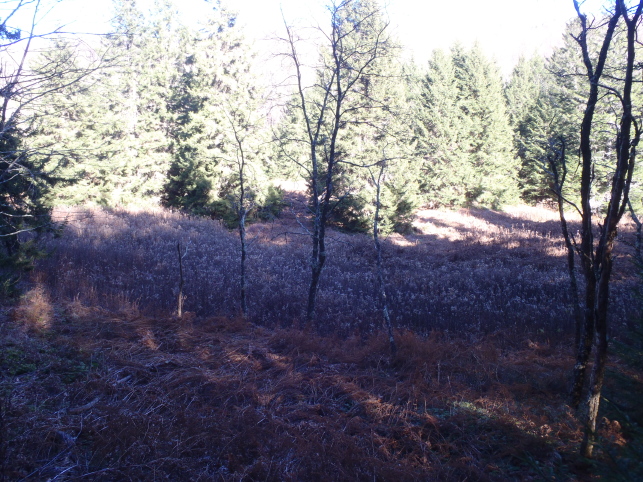
. . . or over-expose the sun-washed trees across the meadow.
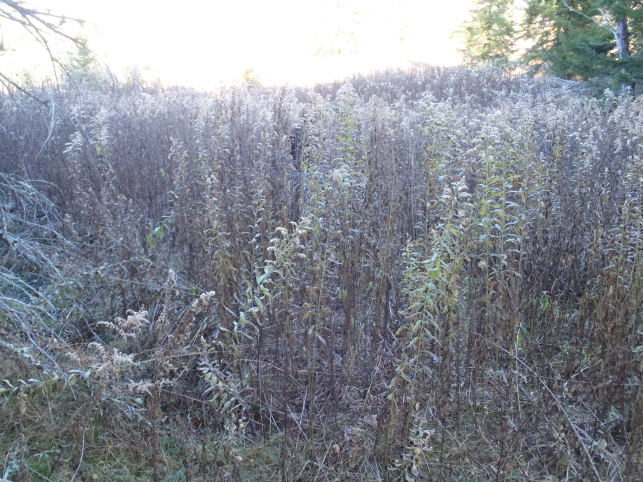
To cross the meadow, we waded through these chest-high plants.
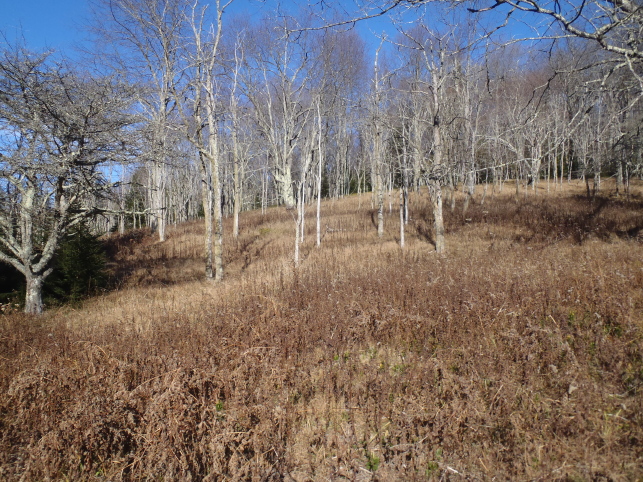
The upper edge of the meadow verges back into a deciduous forest.
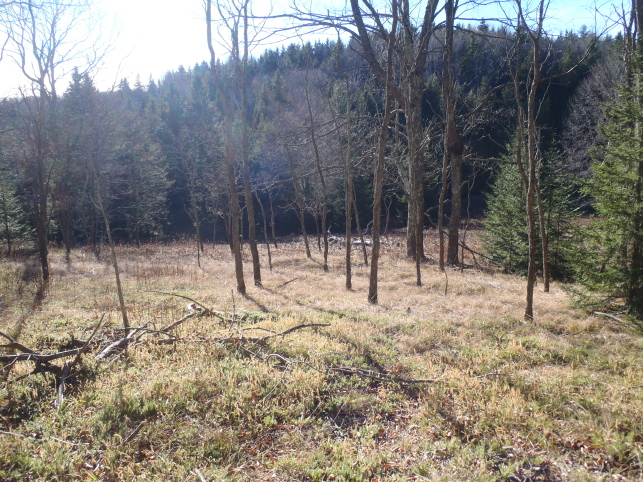
Looking back the direction we had come from.
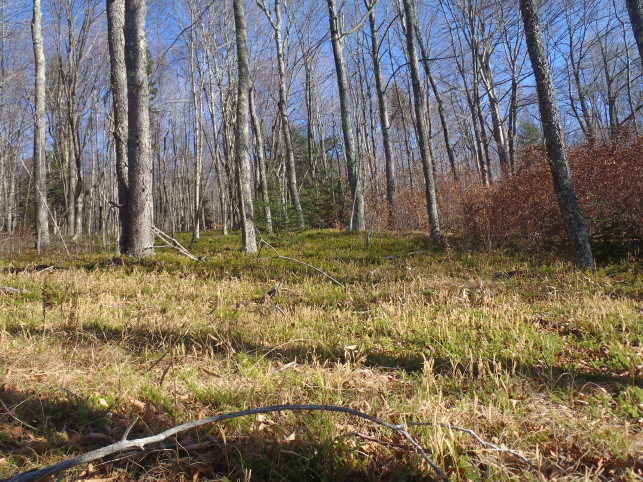
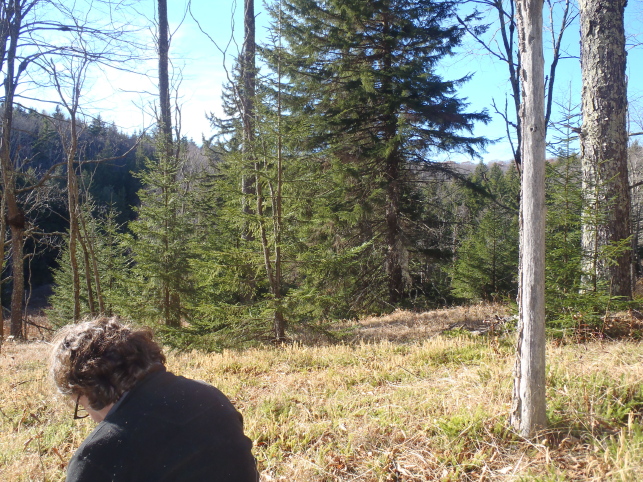
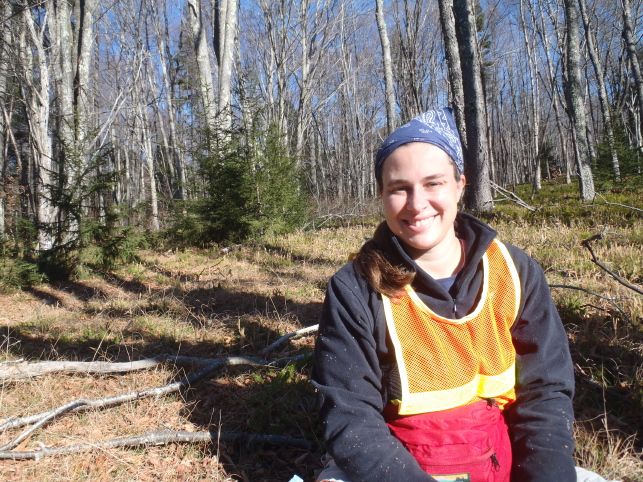
We didn’t hear any shooting but this is a hunting area, so I wore my orange biking vest.
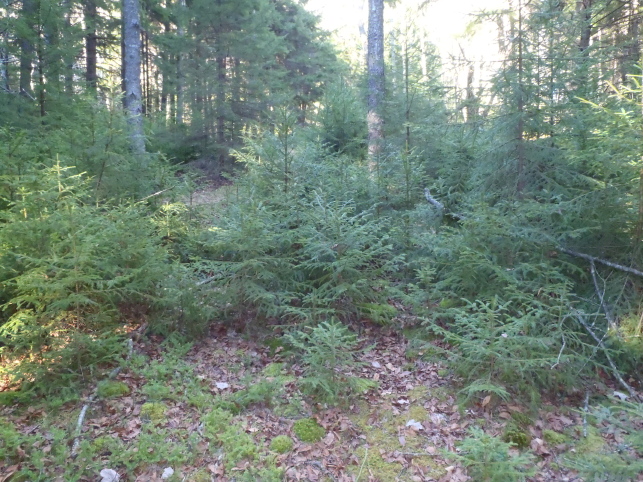
We picked a slightly different route back to the car and discovered what I called a “fir nursery.”